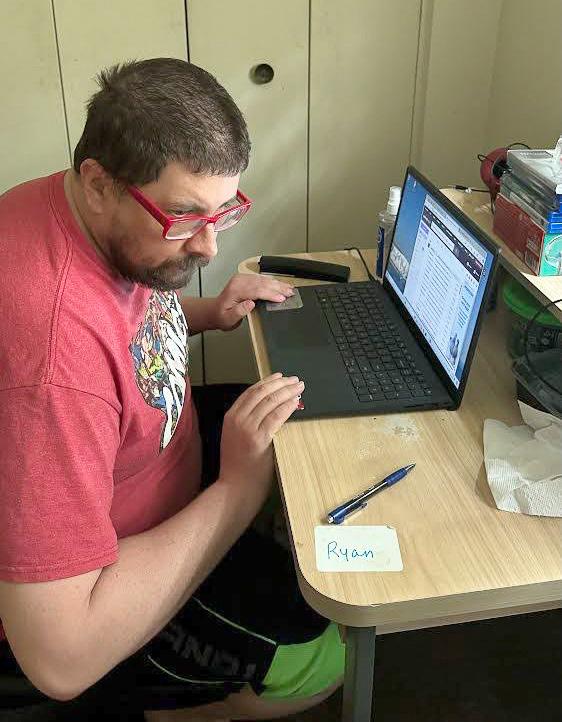
2 minute read
Assistive Technology can improve independence
Assistive Technology can improve independence
By Michael Matacia and Robert Shuemak
Ohio is a technology-first state, and we are prioritizing assistive technology. Assistive technology is any device that can support a person with a disability with a specific task at home, work, or in the community. This technology allows people with disabilities to become, or remain, as independent as possible.
Assistive technology is commercially bought, modified or customized to each person’s needs. Some examples include video cameras, GPS tracking devices, seizure monitors, personal emergency response systems, tablets, and communication apps.
As assistive technology coordinators, we regularly meet with people who receive our services, their families, and support staff. These conversations help us understand which tech solutions best meet each person’s unique needs. We also help with training, repairs, and other resources.
One recent project to increase independence included a Ring video doorbell paired with an intelligent deadbolt lock. This allows the person to see who is outside, speak, and open the door with an app.
Another project includes an iPad with TouchChat, an augmentative and alternative communication app. The person we helped has difficulty speaking with their natural voice. This app has customized words, phrases, and messages so they can communicate with other people.
Assistive technology is not just a tool but a personalized solution that improves independence and expands possibilities for people with disabilities.
To learn more about assistive technology or set up a consultation, reach out to Michael.Matacia@hamiltondds.org or Robert.Shuemak@hamiltondds.org.

Ryan Meyer recently got a new computer. "I waited six months patiently for my computer to arrive. When I got it, I was glad to have it. The computer tech guy helped me set it up with my apps, and he showed me some great tips. I’m five-star satisfied, and I’ve learned a lot, too."








